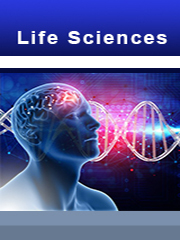Report overview
Recombinant activated factor VII (rFVIIa) binds to exposed tissue factor at the place of tissue and vascular injury. Thrombin generated by this process activates platelets and the coagulation cascade.
This report aims to provide a comprehensive presentation of the global market for Eptacog Alfa (Recombinant Human Coagulation Factor VIIa), with both quantitative and qualitative analysis, to help readers develop business/growth strategies, assess the market competitive situation, analyze their position in the current marketplace, and make informed business decisions regarding Eptacog Alfa (Recombinant Human Coagulation Factor VIIa). This report contains market size and forecasts of Eptacog Alfa (Recombinant Human Coagulation Factor VIIa) in global, including the following market information:
Global Eptacog Alfa (Recombinant Human Coagulation Factor VIIa) Market Revenue, 2018-2023, 2024-2030, ($ millions)
Global Eptacog Alfa (Recombinant Human Coagulation Factor VIIa) Market Sales, 2018-2023, 2024-2030, (K Units)
Global top five Eptacog Alfa (Recombinant Human Coagulation Factor VIIa) companies in 2022 (%)
The global Eptacog Alfa (Recombinant Human Coagulation Factor VIIa) market was valued at US$ 1166.6 million in 2022 and is projected to reach US$ 1431.6 million by 2029, at a CAGR of 3.0% during the forecast period. The influence of COVID-19 and the Russia-Ukraine War were considered while estimating market sizes.
The top three manufacturers of recombinant human coagulation VIIa in the world include Novo Nordisk, LFB SA HEMA Biologics, and GENERIUM, with a total market share of more than 99%. The largest manufacturer is Novo Nordisk, with a market share of more than 95%. North America is the global most important consumer market for recombinant human coagulation VIIa, with a market share of about 45%. In terms of type, the market share of prefilled syringe is over 78%. In the field of application, the market share of congenital hemophilia is about 65%.
We surveyed the Eptacog Alfa (Recombinant Human Coagulation Factor VIIa) manufacturers, suppliers, distributors and industry experts on this industry, involving the sales, revenue, demand, price change, product type, recent development and plan, industry trends, drivers, challenges, obstacles, and potential risks.
Total Market by Segment:
Global Eptacog Alfa (Recombinant Human Coagulation Factor VIIa) Market, by Type, 2018-2023, 2024-2030 ($ Millions) & (K Units)
Global Eptacog Alfa (Recombinant Human Coagulation Factor VIIa) Market Segment Percentages, by Type, 2022 (%)
60 KIU
50 KIU
Global Eptacog Alfa (Recombinant Human Coagulation Factor VIIa) Market, by Application, 2018-2023, 2024-2030 ($ Millions) & (K Units)
Global Eptacog Alfa (Recombinant Human Coagulation Factor VIIa) Market Segment Percentages, by Application, 2022 (%)
Bleeding
Surgery Assisted
Glanzmann Plateletasthenia
Hemophilia B
Hemophilia A
Head Trauma
Others
Global Eptacog Alfa (Recombinant Human Coagulation Factor VIIa) Market, By Region and Country, 2018-2023, 2024-2030 ($ Millions) & (K Units)
Global Eptacog Alfa (Recombinant Human Coagulation Factor VIIa) Market Segment Percentages, By Region and Country, 2022 (%)
North America
US
Canada
Mexico
Europe
Germany
France
U.K.
Italy
Russia
Nordic Countries
Benelux
Rest of Europe
Asia
China
Japan
South Korea
Southeast Asia
India
Rest of Asia
South America
Brazil
Argentina
Rest of South America
Middle East & Africa
Turkey
Israel
Saudi Arabia
UAE
Rest of Middle East & Africa
Competitor Analysis
The report also provides analysis of leading market participants including:
Key companies Eptacog Alfa (Recombinant Human Coagulation Factor VIIa) revenues in global market, 2018-2023 (Estimated), ($ millions)
Key companies Eptacog Alfa (Recombinant Human Coagulation Factor VIIa) revenues share in global market, 2022 (%)
Key companies Eptacog Alfa (Recombinant Human Coagulation Factor VIIa) sales in global market, 2018-2023 (Estimated), (K Units)
Key companies Eptacog Alfa (Recombinant Human Coagulation Factor VIIa) sales share in global market, 2022 (%)
Further, the report presents profiles of competitors in the market, key players include:
BMS
Generium
Novo Nordisk
Shire (Baxter)
Bayer
CSL
Pfizer
Grifols
Biogen
Octapharma
NovoNordisk
Greencross
Kedrion
BPL
Hualan Bio
RAAS
Suzhou Alphamab
Outline of Major Chapters:
Chapter 1: Introduces the definition of Eptacog Alfa (Recombinant Human Coagulation Factor VIIa), market overview.
Chapter 2: Global Eptacog Alfa (Recombinant Human Coagulation Factor VIIa) market size in revenue and volume.
Chapter 3: Detailed analysis of Eptacog Alfa (Recombinant Human Coagulation Factor VIIa) manufacturers competitive landscape, price, sales and revenue market share, latest development plan, merger, and acquisition information, etc.
Chapter 4: Provides the analysis of various market segments by type, covering the market size and development potential of each market segment, to help readers find the blue ocean market in different market segments.
Chapter 5: Provides the analysis of various market segments by application, covering the market size and development potential of each market segment, to help readers find the blue ocean market in different downstream markets.
Chapter 6: Sales of Eptacog Alfa (Recombinant Human Coagulation Factor VIIa) in regional level and country level. It provides a quantitative analysis of the market size and development potential of each region and its main countries and introduces the market development, future development prospects, market space of each country in the world.
Chapter 7: Provides profiles of key players, introducing the basic situation of the main companies in the market in detail, including product sales, revenue, price, gross margin, product introduction, recent development, etc.
Chapter 8: Global Eptacog Alfa (Recombinant Human Coagulation Factor VIIa) capacity by region & country.
Chapter 9: Introduces the market dynamics, latest developments of the market, the driving factors and restrictive factors of the market, the challenges and risks faced by manufacturers in the industry, and the analysis of relevant policies in the industry.
Chapter 10: Analysis of industrial chain, including the upstream and downstream of the industry.
Chapter 11: The main points and conclusions of the report.
